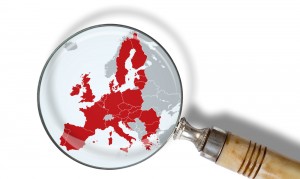
Occasionally my posts include figures for the ‘cost’ of illnesses. The figure is usually something upward of £1 billion for the cost to the UK economy. Sometimes these figures include a monetary valuation of the health burden of the illness, but more often than not they are presented as economic costs and include expenditure on health care, social care, criminal justice and lost productivity. Sometimes, the purpose of these studies is to say “look how much we could potentially save if this illness could be treated effectively”.
Cost of illness studies have faced some criticism, but still have useful applications (Tarricone, 2006). However, it can be unhelpful to present findings from a single study, which is unlikely to be generalisable to an international or even a national level. As with any quantitative research, much can be gained from taking a broad overview of findings using systematic review and ideally meta-analysis.
Bipolar disorder is one illness which is purported to have high economic costs, and here in the woodland I have used a figure of £5 billion cost to the UK (Sampson, 2014). But how does this measure up to the literature as a whole? In light of a new systematic review of cost of illness studies for bipolar disorder, it’s hard to say (Jin & McCrone, 2015).

Should more resources be allocated to those illnesses with the greatest economic burden?
Methods
The authors sought to review all cost of illness studies carried out for bipolar disorder and (more importantly) identify the methodological issues that influence results. They conducted a broad search of the literature using standard databases such as MEDLINE and EMBASE as well as grey literature.
Studies that only reported the costs of interventions and studies that did not report direct healthcare costs were excluded. Furthermore, studies in which participants were not representative of the general population of people with bipolar disorder were also excluded. The main outcome of interest was the annual cost per patient with bipolar disorder.

If necessary, the authors converted figures from national costs to average cost per patient.
Results
877 titles and abstracts were reviewed, of which 127 full articles were retrieved and 54 ultimately included in the review. Most studies were carried out in the USA. There was substantial variation in study design, including disease specification, cost perspective, estimation method, epidemiological approach and the range of costs that were included.
The annual societal cost per patient with bipolar disorder (in 2013 prices) ranged from $1,904 to $33,090, with production losses making up 20-94% of the total cost. Studies indicated that factors associated with higher costs might include:
- Bipolar I disorder
- Delayed diagnosis or misdiagnosis
- Poor prognosis
- Frequent psychiatric interventions
- Use of second-generation antipsychotics
- Non-adherence to antipsychotic treatment
- Relapse
- Multiple comorbidities
Based on their findings, the authors go on to provide a long list of recommendations for good practice to improve the quality and reporting of cost of illness studies for bipolar disorder. Key suggestions include:
- Clear definition of disease and population using objective criteria
- Separate reporting of subgroups if necessary
- Use of appropriate statistical methods to attribute costs associated with comorbidities
- Proper use of a discount rate to estimate present value of future costs
- Use of a broad cost perspective with apportionment of costs to different stakeholders
- More use of prospective cost of illness studies
- Healthcare costs should include inpatient hospitalisation, outpatient and community care, nursing home, medication and substance abuse treatment
- Societal costs should include criminal justice services, supported living, social housing and lost education
- Testing of key assumptions using sensitivity analyses

Results varied greatly between countries. For EU studies, average costs ranged from $4,497 to $11,060.
Discussion
The key purpose of this study is to make recommendations for future research, as the current state of the literature makes the synthesis of results impossible. Methodological choices can have a large impact on cost estimates, and it’s important that future studies report their methods transparently and with good practice recommendations in mind.
Regardless of the total cost figure, the findings imply that savings could potentially be achieved by focusing investment on:
- Interventions targeted at bipolar I disorder
- Early intervention
- Education programmes for improved diagnosis
- Treatment of comorbidities
- Improving adherence
The basis for excluding studies is a little unclear to me; particularly the criteria relating to ‘representativeness’ on which grounds 12 studies were excluded. No details are given of the excluded studies, so it is difficult to be confident that all important studies were included.
Nevertheless, this study successfully demonstrates the inconsistency in cost of illness studies for bipolar disorder. Though the study offers recommendations for improving the quality of future studies, it says little about the quality of existing studies; there is no formal critical assessment. We are therefore left asking the question of which cost of illness studies, if any, should we believe?
Links
Jin H, McCrone P (2015) Cost-of-illness studies for bipolar disorder: systematic review of international studies. Pharmacoeconomics. [PubMed]
Sampson C (2014) Are treatments for bipolar disorder cost-effective? The Mental Elf.
Tarricone R (2006) Cost-of-illness analysis: What room in health economics? Health Policy 77: 51–63 [PubMed] [RePEc]

RT @Mental_Elf: Searching for the cost of bipolar disorder http://t.co/30VhZ8HNTU
Searching for the cost of bipolar disorder: Bipolar disorder is associated with high economic costs…or is it… http://t.co/acOBJmPWOw
Olivia Cialdi liked this on Facebook.
@Mental_Elf why put a cost on every illness.do we want to make people with an illness feel they’re a burden to society?
@Hullbatman @Mental_Elf Absolutely not! It’s helpful in figuring out how to get the biggest improvement to health outcomes from our budget
@ChrisSampson87 @Mental_Elf does that mean whoever says an illness costs the most money gets the bigger cut of the cake or…………
@Hullbatman @Mental_Elf No, it’s just one piece in the puzzle. And the people doing the saying aren’t the ones after the cake!
@ChrisSampson87 @Mental_Elf do the government look at what illness they can make the most money from for example money from drugs companies
@Hullbatman @Mental_Elf Eek! The government doesn’t make money from illness. Bodies like NICE try to get drug companies to reduce prices.
http://t.co/0DKSqGeGAf
Revisión del coste económico del #trastorno #bipolar (el coste personal, social, familiar, es incalculable) :-(
#ActuSanté – Searching for the cost of #bipolar disorder http://t.co/b4xhDRug0C By @ChrisSampson87 via @Mental_Elf
Bipolar disorder is associated with high economic costs…or is it? @ChrisSampson87 reports on a new SR: http://t.co/30VhZ8qd2m
Raluca Lucacel liked this on Facebook.
The Mental Elf liked this on Facebook.
June Dunnett liked this on Facebook.
How can we improve the quality and reporting of cost of illness studies for bipolar disorder? http://t.co/30VhZ8qd2m
Mental Elf: Searching for the cost of bipolar disorder http://t.co/B7ir99vOEK
Don’t miss: Searching for the cost of #bipolar disorder http://t.co/30VhZ8qd2m #EBP
Searching for the cost of #bipolardisorder http://t.co/mSLLFB5Z8a @Mental_Elf looks at a systematic review #costofillnessstudy #costsavings
RT @ChrisSampson87: What’s the cost of bipolar disorder? http://t.co/HZ9PWoTlpi New post by me @Mental_Elf #healtheconomics
The good folk at @CEMPH_KCL did a systematic review of cost of illness studies in bipolar disorder – read my summary http://t.co/JvEOEWsuGG
Searching for the cost of bipolar disorder by @ChrisSampson87
http://t.co/ZfE9RRPhXH